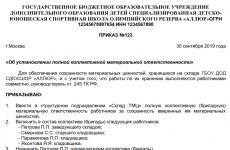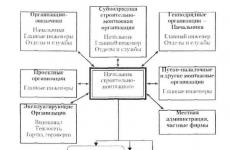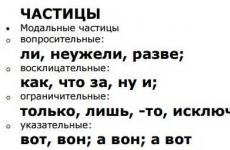Written analysis of the ode on the day of the ascension. Analysis of "Ode on the Day of Accession to the All-Russian Throne of Her Majesty the Empress Empress Elisaveta Petrovna" Lomonosov
M. V. Lomonosov is a great scientist and poet. He became a luminary of science in the 18th century. and until now his works are not forgotten. Poetry for Lomonosov is not fun, not immersion in the narrow, in his opinion, world of a private person, but patriotic, civic activity. It was the ode that became the main lyrical genre in the work of Lomonosov.
One of the most famous works of Lomonosov was the ode "On the day of the accession of Elizabeth Petrovna." Lomonosov begins it with the glorification of the world:
The joy of kings and kingdoms of the earth,
The bliss of the villages, the fence of the city,
If you are useful and red!
When she took the throne
As the Supreme gave her a crown,
I returned you to Russia
The war ended.
Sent a man to Russia
What has not been heard from the century.
Through all obstacles he lifted
Head, crowned with victories,
Russia, trample barbarism,
He lifted him up to heaven.
Describing Peter I, Lomonosov resorts to ancient mythology. The images of Mars and Neptune are used by him to denote war and the sea, which makes the ode even more solemn.
The ode “On the day of the accession of Elizabeth Petrovna” is not only a praise to the empress, but also an instruction to her. The Russia that Lomonosov wants to see is a great country, it is powerful, wise and at peace, but the main thing is that such a future is possible if Russia becomes a sacred power, the existence of which is impossible without an enlightened monarch. In a digression to the era of Peter I, Lomonosov seems to be telling Elizabeth that she should take an example from her father and continue his great deeds, in particular, promote the development of science, as her father did:
Through mountains, rivers and seas,
Look at the high mountains
Look into your wide fields,
Where is the Volga, the Dnieper, where the Ob flows;
Wealth, hidden in them,
Science will frankly
What blooms with your generosity.
Such a huge country, the expanses of which stretch from the western plains, through the Urals and Siberia to Far East needs educated people. After all, only people, knowledgeable people will be able to reveal all the natural wealth of Russia:
Oh you who are waiting
Fatherland from its bowels,
And wants to see them
What calls from foreign countries!
Be of good cheer, now you are encouraged,
Show with your speech
What can own Platos
And quick-witted Newtons
Russian land to give birth.
In these lines, the poet also draws the attention of readers to the fact that the Russian land is able to give minds equal to those “which it calls from foreign countries!”. He makes it clear that Russia is rich not only in natural resources, but also in capable people. People who can not only absorb science, but also sow their fruits. The natural continuation of the ode is the lines:
The sciences feed young men,
They give joy to the old,
V happy life decorate,
In an accident, take care;
Joy in domestic difficulties
And in distant wanderings is not a hindrance.
Science is used everywhere, -
Among the nations and in the wilderness,
In the city noise and alone,
At rest they are sweet and in work.
Reading these lines, one cannot but agree with the author. A person without knowledge is not only uninteresting and boring in himself, he also leads the same life. Without knowledge, a person is not able to develop spiritually, therefore, while singing about science, the author also sings about the human soul. The glorification of man, his soul and genius is the main idea of the ode, it is the connecting thread. Science and knowledge bind not only generations, but also peoples. Knowledge is the fundamental principle of everything.
Lomonosov's ode is something more than just a literary work - it is a message. The message is not only to the Empress and contemporaries, but also to descendants. An excellent example of the fact that the descendants followed his precepts - State University named after Mikhail Vasilievich Lomonosov.
A. S. Pushkin's novel "Eugene Onegin", after exact definition V. G. Belinsky, “encyclopedia of Russian life”. Very interesting, heartfelt, exciting…
The literary activity of M. V. Lomonosov took place in an era when European literature was to a maximum or minimum degree under the influence ...
Mikhail Vasilyevich Lomonosov is truly an encyclopedist of the Renaissance. And, of course, within the framework of literature, we leave behind the scenes…
(2
ratings, average: 5.00
out of 5)
Essays on topics:
- M. V. Lomonosov is a great scientist and poet. He became a luminary of science in the 18th century. and so far his work has not...
- The genre of the ode allowed Lomonosov to combine lyrics and journalism within the framework of one poetic text, to speak out on issues of civil, public importance ....
- The pride of Russian science and literature was Mikhail Vasilyevich Lomonosov. Encyclopedic scientist who made discoveries in many fields of science - physics, chemistry, mathematics, ...
- “Inscription I to the statue of Peter the Great” (1748). Lomonosov glorifies the personality of Peter in the classic journalistic genre of “inscriptions”. The work details...
- The name of Mikhail Lomonosov is associated with the greatest discoveries in the field of science, but few people know that this amazingly talented person was...
- We get the first information about Lomonosov at school: everyone is familiar with the “Arkhangelsk peasant”, who later became a phenomenal scientist and the first Russian ...
M.V. Lomonosov wrote "Ode to put on the accession to the All-Russian throne of Her Majesty the Empress Empress Elisaveta Petrovna in 1747." The genre of the ode allowed him to combine lyrics and journalism within the framework of one poetic text - to the author of the question, to speak out on issues of civil, public importance. The poet admires innumerable natural resources Russian state:
Where in the luxury of cool shadows
In the flock of galloping deer
Catch the cry did not disperse;
Where the hunter did not mark with a bow;
With the ax farmer's thud
Singing birds did not frighten.
The abundance of natural resources is the key to the successful development of the Russian people. The central themes of the ode are the theme of labor and the theme of science. The poet appeals to the younger generation to devote themselves to the service of science:
Be emboldened now
Show with your care
What can own Platos
And quick-witted Newtons
Russian land to give birth.
Lomonosov writes about the benefits of science for all ages. In the ode is created perfect image a ruler who cares about the people, about the spread of education, about improving economic and spiritual development. The high "calm" of the ode is created by the use of Old Slavonicisms, rhetorical exclamations and questions, ancient mythology.
1) Genre originality works.
Ode - a solemn poem glorifying some significant person or historical event. The ode is characterized by a strict logic of presentation.
2) Features of the composition of a lyrical work. The ode has a three-part composition:
Part 1 - poetic delight, praise to the addressee, a description of his services to the fatherland.
2nd part - glorification of the past successes of the country, its rulers; a hymn to modern educational successes in the country.
3rd part - the glorification of the monarch for his deeds for the good of Russia.
3) Features of the "calm" of the ode.
The ode is written in a "high calm". This work is dedicated to the empress, the author uses, along with Russian words, Church Slavonic vocabulary: joy, use, wanderings, etc.
How can young people weaken Russia? (hard work)
What should science be for a person, according to M.V. Lomonosov? (joy, food for the mind, help in difficult situations, etc.)
The personality of G.R. Derzhavin.
Gavrila Romanovich Derzhavin was the largest representative Russian classicism. He was born on July 3, 1743 in the family of a small Kazan nobleman. The entire fortune of the family consisted of a dozen souls of serfs. Poverty prevented G.R. Derzhavin to receive a systematic education.
Only in 1759 (at the age of 16) he was able to enter the Kazan gymnasium, but he did not study there for long either.
In 1762 Derzhavin was called to military service. Poverty also affected here: unlike most noble youths, he was forced to start serving as a private and only in 1772 received an officer's rank. Derzhavin served in the Preobrazhensky Regiment in St. Petersburg. Together with the regiment, he participated in the palace coup that put Catherine II on the Russian throne. The young poet began to write poetry while still in the soldier's service; two notebooks of that early period of creativity have been preserved.
In 1773 G.R. Derzhavin began to publish. Gavrila Romanovich was an adherent of an enlightened monarchy, he believed in the reason and justice of the supreme ruler; sharply negative attitude to peasant uprisings and participated in the suppression of the Pugachev rebellion. Derzhavin was dismissed several times for his too decisive and bold character.
Glory came to the poet only in 1783 after the appearance of his famous ode "Felitsa", dedicated to Catherine 11. The queen, flattered by the ode, returned the poet to the service. G.R. Derzhavin reached the highest government positions: he was a senator, state treasurer, and minister of justice. But the bureaucratic career of Gavrila Romanovich did not work out. The reason for this was Derzhavin's honesty and directness. Alexander I, removing him from the post of Minister of Justice, explained his decision by the inadmissibility of such a "zealous service."
literary fame and public service made G.R. Derzhavin is a rich man. Last years he spent his life in prosperity and tranquility, living alternately in St. Petersburg, then in his own estate near Novgorod. The poet died in 1816.
- Why do you think the ode has become one of the main genres literary creativity M.V. Lomonosov?
- What, in your opinion, is the main, leading theme of the “Ode on the day of the accession to the All-Russian throne of Her Majesty the Empress Empress Elisaveta Petrovna, 1747”? How are other seemingly freely developing themes related to it?
- Try to characterize the image of the empress created by Lomonosov in the ode. Compare it with the image of Elizabeth in the portraits of Russian artists of the 18th century known to you.
- What attitude did Lomonosov express towards Peter I? What kind artistic techniques, characteristic of classicism, are used in the depiction of Peter? How do they affect the reader's perception?
- How is Russia depicted in the ode? What attracts the poet's attention? What epithets and comparisons does he use to recreate the image of the Motherland?
Lomonosov preferred heroic themes in artistic works, asserted the glory and power of the Russian state, sang the victories of Russian weapons, saw the future of his country in enlightenment, the dissemination of sciences, and domestic education. The tasks of glorifying the state and its most worthy statesmen and military figures were answered to the greatest extent by the ode. In the poem "A Conversation with Anacreon," Lomonosov explained his literary predilection in the following words:
Although I am not deprived of tenderness of the heart In love, I am more delighted with the heroes of eternal glory.
Although in his younger years Lomonosov liked to write love songs, two of which have survived to this day, the main task for him was to instill in his fellow citizens a sense of duty and a desire for socially useful activities using the examples of domestic heroes. The genre of the ode then made it possible to combine lyrics and journalism in a great work, to speak out on issues of national importance, and to do this, according to the well-known Russian researcher literature XVIII century A. V. Zapadova, strongly, figuratively, beautifully.
The leading theme of “Ode on the day of the accession to the All-Russian throne ...” is the theme of Russia, its present and future, the praise of its greatness, wealth, that is, a patriotic theme. It is revealed through a number of topics subordinate to it, concretizing the author's attitude to the homeland and its people. Among them are the images of Peter I and Empress Elisaveta Petrovna, personifying Russia and carrying out progressive transformations, the theme of war and peace (beloved silence), the theme of science and art, the beauty and vast natural wealth of Russia, and also the theme of the young generation, symbolizing its future prosperity.
The glorification of the monarch is one of the distinctive features of the classicist ode, since his image symbolizes the strength and unity of the state, for Russian classicists it is an enlightened monarch who patronizes the law, sciences, who sees the goal of his activity as good subjects. Such in the ode is the wife of Elisaveta Petrovna. Her image is of a ceremonial, solemn character. As a classicist, Lomonosov, in the image of a monarch, captured his vision of power and standing on top of it. The empress in the ode of Lomonosov is beautiful and majestic (the sight is more beautiful than paradise), she stops wars in the name of the tranquility of the Russians. Verbal description empresses in the odes of Lomonosov (Catherine I, Elizabeth Petrovna and Catherine II) was quite consistent with their artistic depiction in the portraits of the classicists. Creating the image of the Russian monarch, artists adhered to the formula “Elizaveta is Peter today,” meaning the renewal and continuation of Peter the Great’s transformations after a decade of Biro-novshchina during the reign of Anna Ioannovna. The advanced part of Russian society hoped for the further development of the cause of Peter in peacetime.
Cliques are heard in the valleys:
"Great Petrov's daughter exceeds her father's generosity, aggravates the contentment of the muses, And fortunately opens the door."
There is a well-known portrait of Elizabeth Petrovna by I. Vishnyakov (1743), which is exhibited in the Tretyakov Gallery. The Empress majestically rises above the world, like an unshakable pyramid. She is royally motionless, which is emphasized by the coronation robe, mantle. The image of the autocrat is complemented by such attributes of power as the crown, scepter and orb. On the motionless face there is an expression of greatness and a benevolent smile addressed to the subjects. It seems that the words of Lomonosov are addressed to this appearance of Elizabeth:
This glory to you alone, Monarchine, belongs, Your vast power, Oh, how she thanks you!
And the appeal characteristic of the solemn odic style:
Look at the high mountains, Look at your wide fields...
As already mentioned, for Russian classicists, Peter I is an ideal enlightened sovereign who cares about strengthening the Russian state, its military power, and the development of sciences and arts. So he is depicted in the ode "On the day of the accession to the All-Russian throne of Her Majesty the Empress Empress Elisaveta Petrovna, 1747." In his image, there is a clear orientation towards antiquity, which is characteristic of the creation of the image of the hero. To show the strength and greatness of Peter I and his deeds, the author uses a comparison with the god of war Mars, who “feared his sword in Peter's hands in vain”; Neptune is surprised, looking at the fleet created by Peter (" Russian flag"). In general, ancient realities are often mentioned in the ode - the names of the gods, the muses, Parnassus, with whom he compares the collection of muses on Russian soil, the philosopher Plato. At the same time, Lomonosov sees in the appearance of Peter the Great the divine will, the will of the “builder of the world”, which glorifies the creator who sent a man to Russia:
What has been unheard of for centuries. Through all the obstacles, he lifted up the Head, crowned with victories, Russia, trampled by rudeness, He raised him to heaven with himself.
Of course, in the odes of Lomonosov, a sincere enthusiastic attitude towards Peter is expressed, although idealized. The poet, as it were, forgets at what cost his transformation was achieved. material from the site
Comparing Russia with other countries, their heritage, Lomonosov gives Russia an advantage. These are high, almost wide mountains, these are the great rivers Volga, Dnieper, Ob, Lena, equal in width to the seas, a vast expanse of lands, riches that India boasts of. The riches of Russia include deep forests, diverse animal world. As if introducing the Empress to her vast possessions, Lomonosov glorifies Russia. And here it is sometimes difficult to distinguish the object of praise in the ode - Elisaveta Petrovna or the vast country that is under her citizenship. These two images sometimes merge into one in the perception of readers, which indicates the priority for the poet of the image of the great native state and its good.
We will glorify your gift to the heavens, And we will put a sign of your bounty, Where the sun rises and where Cupid Spins in green shores, Wishing to return again To your state from Manchuria.
Didn't find what you were looking for? Use the search
On this page, material on the topics:
- ode to ascension day test
- line-by-line analysis of the ode for the day of the ascension
- Parnassus in Lomonosov's ode
- Lomonosov Catherine's accession to the throne plan
- Themes of Lomonosov's Ascension Ode
Average rating: 4.5
The poetry of M. V. Lomonosov - majestic, solemn and at the same time thoughtful, like all his intense creative activity was subordinated to concerns about the spiritual and material needs of the Russian people.
A scientist and poet, Lomonosov passionately desired to see his homeland powerful and majestic, prosperous in the sciences and industry, capable of staunchly defending its borders and ensuring peace for its citizens. In his works, he sang of "Russia equal to the sky", the vastness of the territory, the wealth of resources, the industriousness and talent of the people. But he also well represented the true situation in the country. I saw that the royal court was full of debauchery, that in the Academy of Sciences responsible positions were distributed to foreigners, that the people were suffering from ignorance.
As an adherent of an enlightened monarchy, Lomonosov believed that an educated ruler who thinks about the state is able to rise above the selfish interests of individual classes and issue laws that benefit the whole society. But at the same time, the advisers of the kings should not be flattering and greedy courtiers, but people of science and art, selflessly serving the Fatherland. Lomonosov's odes addressed to the authorities show that Lomonosov himself was ready to become such a "teacher of monarchs".
Odu is a lyrical genre in which, according to V.K. Trediakovsky, “describes ... matter noble, important, rarely tender and pleasant in speeches that are very pitiful and magnificent,” the poet chose for a conversation with the kings. He spent most of these "conversations" with Queen Elizabeth, whose reign spanned twenty years of his own life. Elizabeth, the daughter of Peter I, according to Lomonosov, was to continue the work of the great father.
In "Ode on the day of accession to the throne ...", the poet praises Elizaveta Petrovna for deeds that she has not yet done, but which Lomonosov himself saw as important and useful for the state. Distributing laudatory advances, Lomonosov believed that this would oblige the queen to be worthy of praise in the future.
"Ode on the day of the accession to the throne of Empress Elizabeth Petrovna, 1747" is one of his the best works in this genre. The ode begins with praise for peaceful times, which contribute to the prosperity of the state and the well-being of the people. Turning to Elizabeth, Lomonosov praises her as a champion of peace, who, upon accession to the throne, stopped the war with the Swedes:
I'm full of those victories, she said
For whom blood is flowing.
Praises her as a sovereign who cares about the well-being and happiness of her people:
I enjoy Russian happiness,
I do not change their calmness
To the west and east.
He warns the government against participating in the war, praises the world, which he calls the word "silence":
The joy of kings and kingdoms of the earth,
Beloved silence,
The bliss of the villages, the fence of the city,
If you are useful and red!
This lyrical digression allows the poet to move on to his favorite topic - the reign of Peter I, a fighter against the backwardness in which Russia was before him. Lomonosov praises Peter for creating a regular army and navy, and especially for spreading the sciences:
Then divine sciences
Through mountains, rivers and seas
They stretched out their hands to Russia...
Then, mentioning the reign of Catherine I, Lomonosov again turns to Elizabeth, in whom he would like to see a worthy successor to the great father, the same patron of science and art.
In 1747, Elizabeth approved a new charter and a new staff of the Academy of Sciences, the amount of funds for science was doubled, and the poet immediately welcomed the empress as a champion of enlightenment. Lomonosov admiringly speaks of how vast the expanse of Russia is, how inexhaustible its riches are: full-flowing rivers, fertile lands, fabulous subsoil. For its future greatness and glory, it is necessary to master all these riches and turn them to the benefit of the state and people. This can be done by people of science, scientists:
Look at the high mountains
Look into your wide fields,
Where is the Volga, the Dnieper, where the Ob flows;
Wealth in these secretly
Science will be frankly...
At the same time, outraged by the dominance of mediocre and greedy German scientists at the Academy of Sciences, Lomonosov turns to young talented people, "whom the Fatherland expects from its bowels", he believes, "... What can the Russian land give birth to of its own Platons And quick-witted Newtons."
The significance of the "Ode on the day of the accession to the throne of Empress Elisaveta Petrovna, 1747" lies, first of all, in the fact that it contains a harmonious, well-thought-out program for the peaceful prosperity of the state, which will be facilitated by the dissemination of sciences and the education of smart and talented people in their own environment. scientists. It is the sciences that will help to master the inexhaustible treasures of Russia, and this will ensure its well-being and prosperity in the future.
The founder of syllabic-tonic versification and the magnificent poet Lomonosov, despite his commitment to enlightened absolutism, which can be historically explained by the limited political views of the poet-scientist, directed all his activities to the benefit of the people, because he always felt his blood closeness with him. That is why patriotism is the leading line of his poetry.
In the work of Lomonosov, such themes as nature and its knowledge from the point of view of science, the motherland and its outstanding personalities appear. To explore these topics, the author uses high style, since he believed that such topics, being themselves high, should be written in an upbeat language. And his preferred genre was the ode.
"Ode on the day of the accession to the throne of Empress Elizabeth Petrovna, 1747" absorbed all the features of Lomonosov poetry. The silence that the poet glorifies at the beginning of the ode is associated with the absence of war. The poet puts the end of the war during the period of her reign to the merits of the empress. The author of the ode does not forget to mention Elizabeth's father, Peter I, who was rated by Lomonosov as a national hero.
The poet believes that the empress, continuing the path of her father, will contribute to further development Sciences. In fact, the poem is more of an edification to Elizabeth than a praise of her. After all, Lomonosov believed that only an enlightened ruler is able to take care of the welfare of his subjects and his fatherland.
In the image of Lomonosov, before the eyes of the reader, the image of various landscapes of the vast Russian land comes to life. At the same time, the author calls on the younger generation to put the natural wealth of the country at the service of the people. But this is possible, according to the author, only thanks to deep knowledge. That is why, at the end of the ode, a hymn praising science sounds.
The composition of the ode is strictly within the framework of classicism and is composed in compliance with the logical sequence of the events depicted. And the use by the author, along with indigenous Russian words, of Old Slavonicisms was done in order to give the ode solemnity.
There are also images from Greco-Roman mythology in the ode. So, Minerva personifies reason and science, and Mars and Neptune - war and the sea element.
There are many in the work and various comparisons, epithets, metaphors that help the poet most clearly reveal his creative intention.






